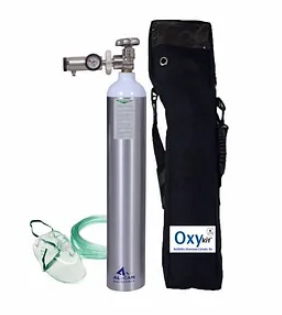Maintaining and cleaning your oxygen cylinder is crucial for ensuring safety and efficiency in its use. Whether you rely on an oxygen cylinder for medical purposes or for industrial applications, proper care is essential to prolong its life and maintain its functionality. This article provides a detailed guide on how to properly maintain and clean your oxygen cylinder.
Understanding the Importance of Proper Maintenance
Oxygen cylinders are vital for various applications, including medical treatments, welding, and industrial processes. Regular maintenance not only ensures that the cylinder operates effectively but also prevents potential hazards. An improperly maintained oxygen cylinder can lead to leaks, contamination, or even catastrophic failures. Therefore, understanding the importance of maintenance is the first step in ensuring safety.
Regular Inspection of Your Oxygen Cylinder
One of the key aspects of maintaining your oxygen cylinder is conducting regular inspections. Check the cylinder for any visible damage, such as dents, rust, or corrosion. Additionally, examine the pressure gauge to ensure it operates correctly. If the gauge is malfunctioning, it may give inaccurate readings, leading to unsafe conditions. Regular inspections help identify issues early, allowing you to address them before they become serious problems.
Proper Storage Practices
Proper storage is essential for cleaning oxygen cylinder. Store the cylinder in an upright position to prevent it from falling over, which could damage the valve. It’s also important to keep the cylinder in a well-ventilated area, away from flammable materials. Ensure that the storage area is dry and cool, as extreme temperatures can affect the integrity of the cylinder. By following these storage practices, you can significantly extend the life of your oxygen cylinder.
Cleaning Your Oxygen Cylinder: Why It Matters
Cleaning your oxygen cylinder is just as important as maintaining it. Dust, dirt, and other contaminants can compromise the quality of the oxygen inside the cylinder. Additionally, a dirty cylinder can lead to health risks if the oxygen is used for medical purposes. Regular cleaning ensures that the cylinder remains free from contaminants and operates safely.
Step-by-Step Guide to Cleaning Your Oxygen Cylinder
Cleaning your oxygen cylinder involves a few straightforward steps. First, make sure to turn off the valve and depressurize the cylinder completely. Next, using a soft cloth or sponge, wipe down the exterior of the cylinder with a mild detergent solution. Avoid using abrasive materials that can scratch the surface. Pay special attention to the valve area, as dirt can accumulate here. After cleaning, rinse the cylinder with clean water and dry it thoroughly to prevent any moisture from remaining.
Handling and Transporting the Cylinder Safely
When handling and transporting your oxygen cylinder, safety should be your top priority. Always use protective gloves and eyewear when working with the cylinder. Ensure that the cylinder is secured during transport to prevent it from rolling or falling. If you are transporting multiple cylinders, ensure they are arranged properly and separated to avoid collisions. By following these safety measures, you can significantly reduce the risk of accidents.
Professional Services for Cylinder Maintenance
While regular inspections and cleaning can be done at home, there are instances where professional services are necessary. For example, if you notice any significant damage during your inspections, it’s essential to consult a professional. Additionally, periodic professional checks can help ensure that your cylinder complies with safety standards. Investing in professional maintenance services can save you money in the long run by preventing costly repairs or replacements.
Conclusion: Ensuring Longevity and Safety
Maintaining and cleaning your oxygen cylinder is vital for ensuring its longevity and safety. By following the steps outlined in this guide, you can keep your cylinder in optimal condition and reduce the risks associated with its use. Regular inspections, proper storage, and thorough cleaning are key practices that every owner should adopt. For more tips on health and safety, visit primehealers.com. Prioritize your safety and keep your oxygen cylinder functioning effectively for years to come.
